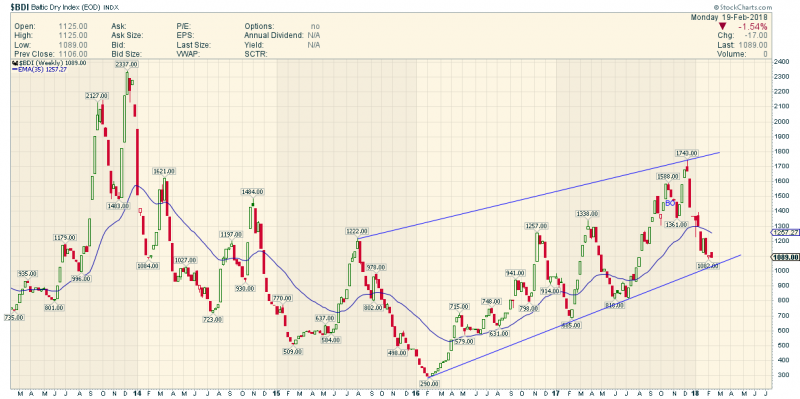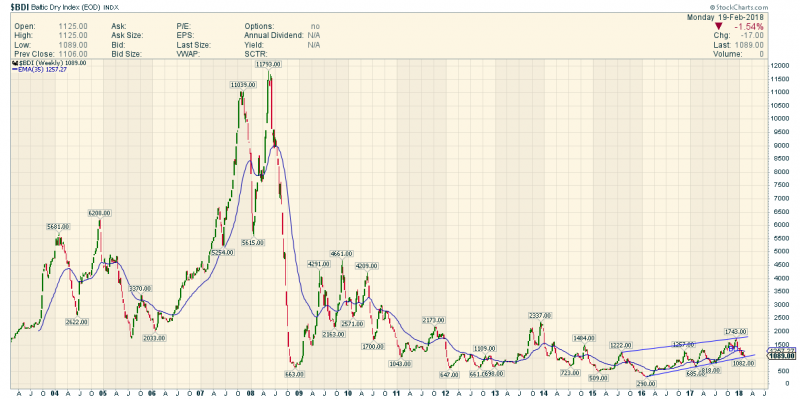Baltic Dry Index
This co relates with Commodities
“Importance
Most directly, the index measures the demand for shipping capacity versus the supply of dry bulk carriers. The demand for shipping varies with the amount of cargo that is being traded or moved in various markets (supply and demand).
The supply of cargo ships is generally both tight and inelastic—it takes two years to build a new ship, and the cost of laying up a ship is too high to take out of trade for short intervals,[5] the way you might park a car safely over the winter. So, marginal increases in demand can push the index higher quickly, and marginal demand decreases can cause the index to fall rapidly. e.g. “if you have 100 ships competing for 99 cargoes, rates go down, whereas if you’ve 99 ships competing for 100 cargoes, rates go up. In other words, small fleet changes and logistical matters can crash rates…”[6] The index indirectly measures global supply and demand for the commodities shipped aboard dry bulk carriers, such as building materials, coal, metallic ores, and grains.
Because dry bulk primarily consists of materials that function as raw material inputs to the production of intermediate or finished goods, such as concrete, electricity, steel, and food; the index is also seen as an efficient economic indicator of future economic growth and production. The BDI is considered by some people as a leading economic indicator because it predicts future economic activity.[7][8]
Other leading economic indicators—which serve as the foundation of important political and economic decisions—are often measured to serve narrow interests, and subjected to adjustments or revisions. Payroll or employment numbers are often estimates; consumer confidence appears to measure nothing more than sentiment, often with no link to actual consumer behavior; gross national product figures are consistently revised, and so forth. Unlike stock and bond markets, the BDI “is totally devoid of speculative content,” says Howard Simons, an economist and columnist at TheStreet.com. “People don’t book freighters unless they have cargo to move.”
That’s a pretty strong move down ( almost halved in a short time)
Needs to bounce
Context : Shipping has yet to get off the map since the GFC
It’s interesting that EVERYTHING Commodity related bottomed in Jan 2016 and has bounced…but that bounce has faded.
However this IS an uptrend …a feeble one but up so far


indeed strange how it all bottomed at the same time, almost like the big players flipped the switch, seems to organized to be just a fluke bottom event.
Feeble so far. My gut (and most importantly, the charts) tell me that will change, and soon.